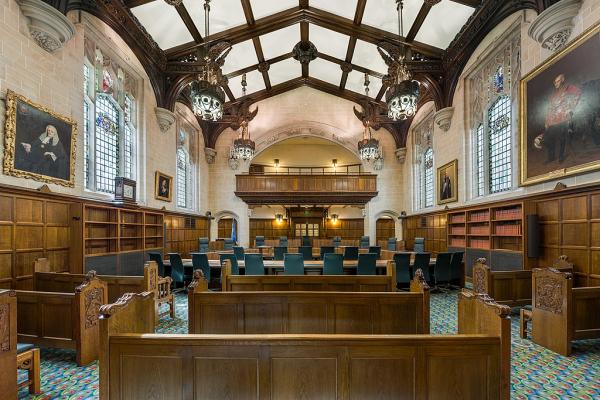Richard Parry discusses the judgment on incorporating the rights of the child into Scots law and what this may mean for future devolution cases
It was not surprising that on 6 October a panel of five Supreme Court justices, including all four from Scotland, Wales and Northern Ireland, found unanimously (2021 UKSC 42) that Scottish legislation requiring conformity with the United Nations Convention on the Rights of the Child (and, in a related case, the European Charter of Local Self-Government) was not within devolved powers. As soon as the Scottish Parliament sought to impose this compliance on non-devolved UK laws and public functions they were in trouble. The worthiness of the cause and the cross-party support for it did not count – ‘the fact that an enactment has been passed by the Scottish Parliament, even unanimously, has no bearing on the legal questions which this court has to decide’ (para 31).
Beyond the immediate issue, the case raises the issue of the general orientation of the Court on devolution issues. Its President and deputy President were both Scottish judges, Robert Reed and Patrick Hodge. Lord Reed’s forensic intellect, evidenced in his minority support for the UK government in the case on giving notice to leave the EU in 2017, and his opposition to it on the prorogation of Parliament in 2019, was on display in this judgment under his name. Inevitably attention has turned to how the Court might regard future devolution cases, including any on a future independence referendum,
The Court’s key principle in this judgment (para 7) is ‘the importance of giving the Scotland Act a consistent and predictable interpretation, so that the Scottish Parliament has a coherent, stable and workable system within which to exercise its legislative power. That is achieved by interpreting the rules as to competence in the Scotland Act according to the ordinary meaning of the words used’. In this approach, the law is capable of a strict construction and should not be stretched in a particular direction even if this reflects a widespread political sentiment. This is a familiar issue for the justices of the US Supreme Court.
The judgment seemed to find two aspects of Holyrood’s approach particularly objectionable. The first is that the pre-enactment safeguards over competence (that the minister promoting a bill has to declare it so competent, and the Presiding Officer advise when she believes it is not) had not been followed, so that (para 74) if they ‘can be satisfied that the provisions of the bill are within competence, even when they plainly exceed competence in their face’, on the assumption that the courts will intervene if they got it wrong, then the safeguards become nugatory. This line of reasoning relates uncomfortably to any contention that Scottish ministers and law officers, and the Presiding Officer, are under a duty to declare incompetent an independence referendum without UK consent.
The second issue is the use of the courts as an umpire and evolutionary tweaker of devolution. The mechanism at work here is section 101 of the Scotland Act which says that if Scottish legislation ‘could be read in such a way as to be outside competence…(it) is to be read as narrowly as is required for it to be within competence, if such a reading is possible’. In other words, the coat of competence is to be cut generously rather than tightly.
The judgment (para 79) says that ‘s101(2) cannot have been intended to enable the courts to undertake, in substance, a rewriting of provisions enacted by the Scottish Parliament, which on their face are plainly and unambiguously outside its legislative competence, so as eventually, if sufficient cases are decided, to produce an outcome which accurately reflects the limits of legislative competence set out in the Scotland Act’. But the judgment had also to address, if only to veer away from, devolution and human rights cases where a stretch outside strict construction has appeared to be in play over the years. As followers of sport know, the ‘soft signal’ or ‘on-field decision’ will be influenced by the availability of a video review, and in time case law will produce an evolution of the letter of the rules.
Where does this leave the independence referendum, an intensely political-legal issue? At the moment, both sides can hope that the law is on their side on the question of whether the 2014 mechanism – the granting of a temporary extension of devolved powers by the UK to allow the Scottish Parliament to run a referendum – established that without such an extension no such power existed. It is not quite correct to assert that ‘the constitution’ is reserved; schedule 5 of the Scotland Act reserves ‘the following aspects of the constitution’, namely the Crown, the UK Parliament, ‘the Union of the Kingdoms of Scotland and England’ and the existence of the highest Scottish courts. A referendum could not in itself repeal the Act of Union.
The argument that spending public money on a referendum relating to a reserved power would be illegal has to be an indirect one. Search devolution legislation for a prohibition of referendums on independence or anything else and you will not find it. For a Supreme Court seeking to apply the ‘ordinary meaning of the words used’, this might be uncomfortable. Are they becoming slightly less devolution-friendly? They assert (para 7) that the Scottish Parliament ‘does not enjoy the sovereignty of the Crown in Parliament’; they always refer to ‘Parliament’, not ‘the UK Parliament’. It would be hazardous to predict. The Court’s judgment on prorogation that so decisively followed the logic of the Scottish rather than the English and Welsh courts showed that they can surprise us.
Image from Diliff licenced under CC BY-SA 3.0

